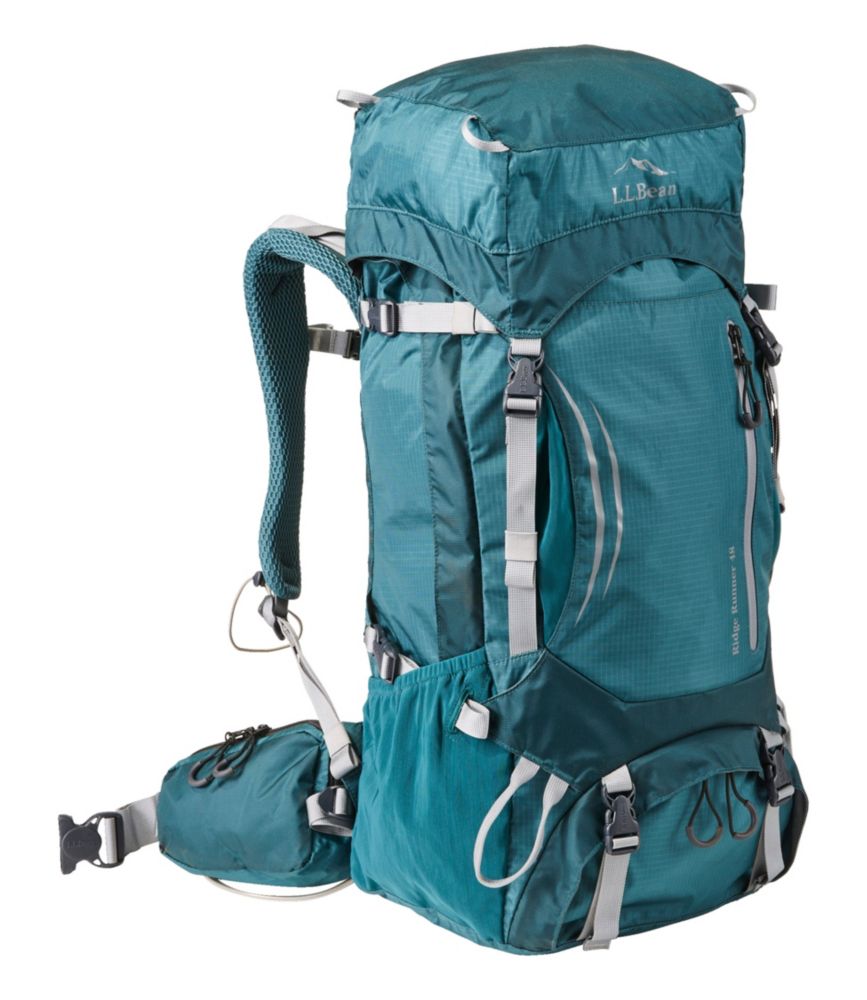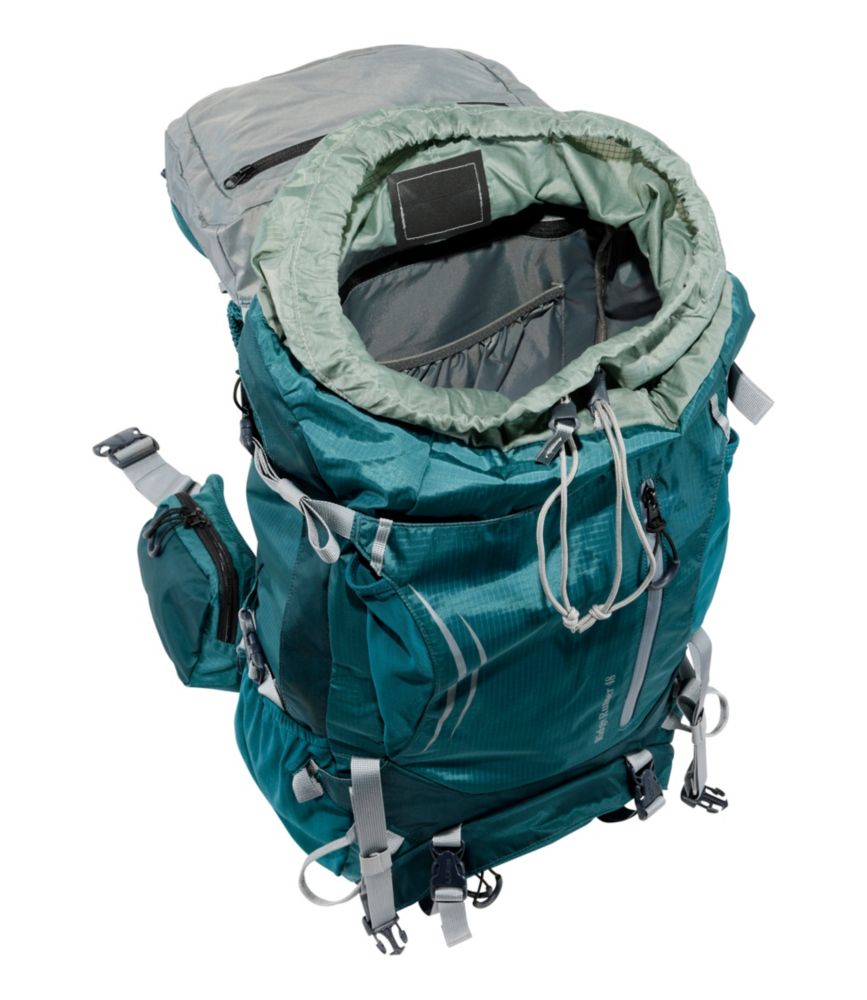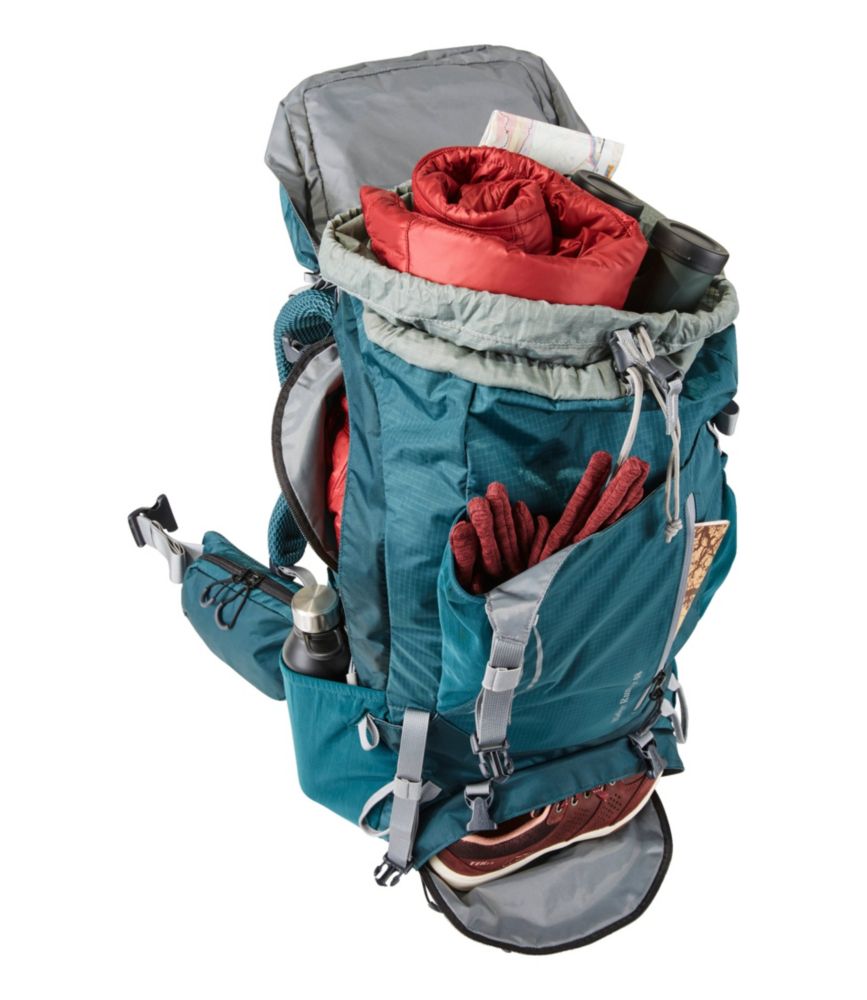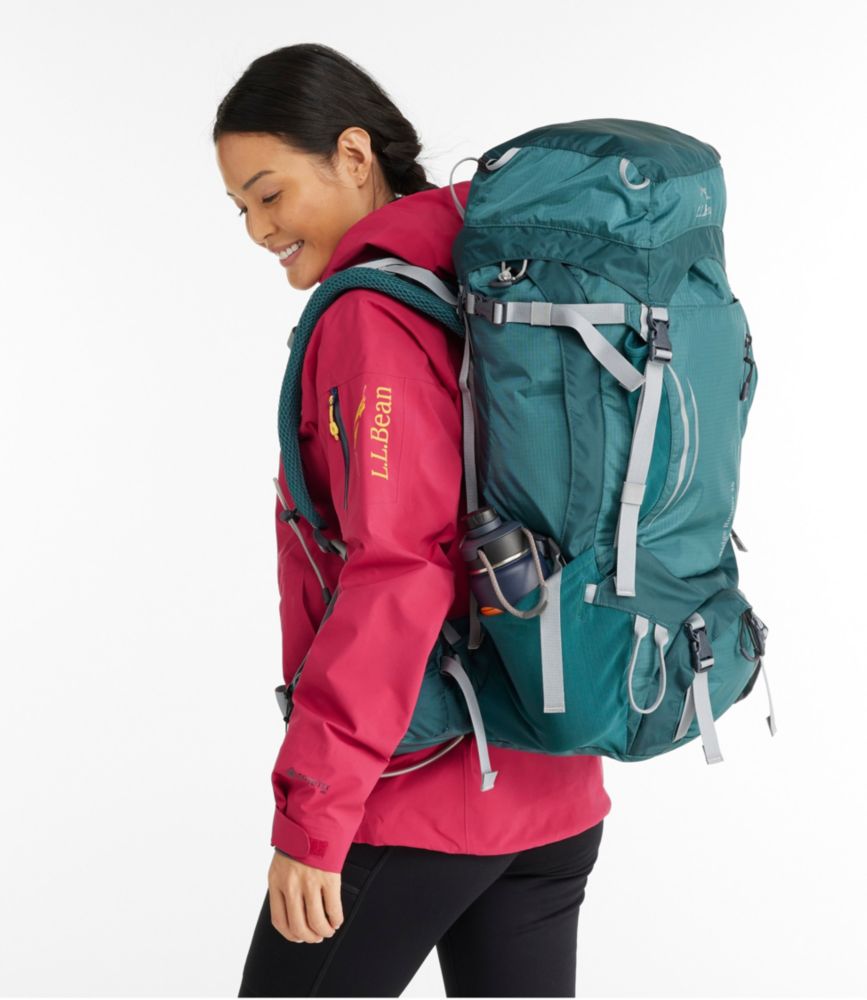- Weight:: 3 lb. 8 oz.
- Max. waist size:: 42".
- Torso fit:: Small 13-16", Medium 17-19".
- Capacity:: 2,907 cu. in.; 48L.
Women's L.L.Bean Ridge Runner Backpack, 48L

N/A
{"sales":{"value":null,"currency":null,"formatted":"N/A"},"list":null}
FREE Shipping with C$ 100 Purchase
Size:
Please select size
Limited quantity
More information is needed.
Please select:
In-store Availability: Select options (ex.: size or color)
Product Details
Our most versatile pack, the Ridge Runner is a rugged, lightweight pack built for everybody and every type of hike. Built for weekend backpacking trips, it features a women's-specific harness and two sizes to cover most body sizes.
- Large stretch mesh water bottle pockets with integrated, tuckaway compression straps.
- Ice axe loop with elastic trekking pole attachment.
- HDPPE back panel with 2 pre-bent stays supports loads from 20 to 40 lb.
- Mesh-covered, dual-density foam on back panel and shoulder straps is perforated for breathability.
- Main body fabric is tough 100D triple ripstop nylon; lined with 210D nylon.
- Large main compartment with reversed canting zipper for wider opening and easier access.
- Holds up to a 2 liter hydration bladder; sold separately.
- Fleece-lined sunglass/electronics pocket.
- Front shove-it pocket keeps an extra layer handy.
- Hanging interior security pocket with key fob.
- Hydration sleeve with Hypalon hydration port.
Rated 2 out of
5
by
Phil from Maine from
Poor design on the hip belt causing the belt to rip out of the side pockets where it was attached with a single stitched seam. Belt should have been attached to back for strength with pockets attached to belt, not vice versa.
Date published: 2025-10-16
Rated 3 out of
5
by
Nancy from
Needs a Manual!
Where are the instructions, or at least some diagrams? I purchased the Women's 48L L.L.Bean Ridge Runner Pack for a three-day, guided Appalachian Mountain Trail trip in the White Mountains. I already owned the 22L Women's L.L.Bean Ridge Runner Day Pack, so I figured the 48L would be a good choice to carry the 20+ lbs of necessary gear. Given all the features of a pack for this purpose, why are there no guidelines for fit and use of all the straps, etc? How would someone new to backpacking know what all the straps were for and how to adjust them? The hip belt, shoulder straps, the sternum strap are self-explanatory but I struggled with the strap adjustments, especially the shoulder straps and load lifters. And it was the Appalachian Mountain Trail guide who showed me that there was a Velcro panel on the back that allowed for vertical adjustment of the whole pack. I never would have known it was there. Once I figured out how to put the pack on and make adjustments, I found none of the straps glided easily. The pack was pretty uncomfortable for three days. I learned the importance of a well-fitting pack, no less important than the proper fit of a hiking boot. Before the next trip, I will likely make another purchase of a different brand from a store that offers some expertise in fitting the pack to the customer.
Date published: 2025-06-28






